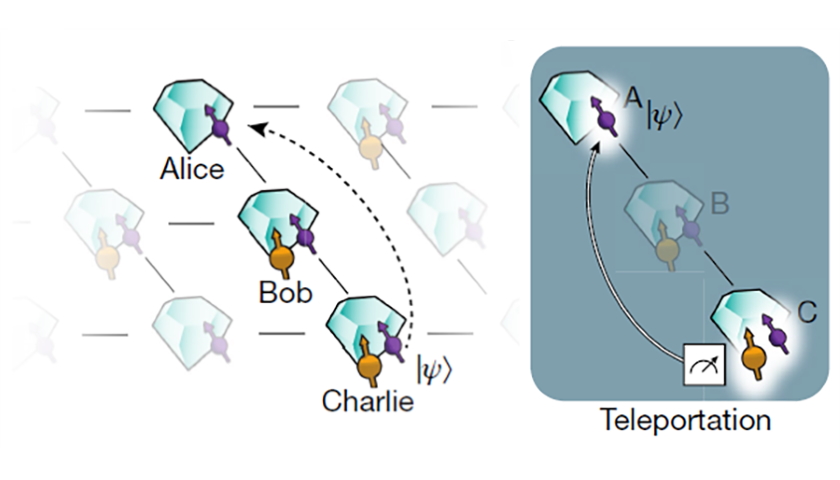Scientists have “teleported” quantum information between two network nodes which are not directly connected, in an important step towards a quantum Internet.
A team led by Ronald Hanson of Delft University connected diamond-based qubits in a network. and then shared the quantum state of one qubit with another node which was only connected via an intermediate node. This is a key step towards creating a “quantum Internet,” where quantum states can be shared without losing data between remote systems.
The quantum network had three nodes in a line, called Alice, Bob, and Charlie, or A, B, and C (as is traditional in network and security demonstrations). Each one used the spin of a carbon nucleus as a “memory qubit”, and the spin of an electron as a “communication qubit”. Neighboring nodes had the quantum states of their communications qubits entangled so that one depended directly on the other.
“To prepare the teleporter, we use an entanglement swapping protocol mediated by Bob, similar to a quantum repeater protocol, to establish entanglement between Alice and Charlie,” says the paper. “Once successful preparation of the teleporter is heralded, the input qubit state is prepared on Charlie and finally teleported to Alice.”
When two particles are entangled, the state of one depends on the other, even when they are separated (which Einstein referred to as “spooky action at a distance”). This has been proposed as a way to communicate between qubits. A quantum repeater has to operate carefully, so the information is shared through entanglement, but not revealed by measurement, which would destroy the “coherence” which allows the qubit to operate with multiple values at the same time, giving quantum systems their massive potential power.
“It’s really teleportation as in science-fiction movies,” Hanson told New Scientist. “The state, or information, really disappears on one side and appears on the other side, and because it’s not traveling the space in between, [the data] can also not get lost.”
Source: datacenterdynamics.com





